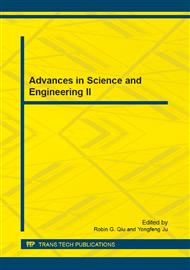p.873
p.879
p.886
p.893
p.901
p.907
p.913
p.918
p.924
Simulation and Experimental Research on Crosstalk of Multiconductor Cable’s Core Lines
Abstract:
In order to research the crosstalk of multiconductor cable’s different core lines, based on finite-difference time-domain (FDTD) method, the Crosstalk of the four core lines cable without metal shield layer is researched by simulation. Results show that because of the cable’s distributed parameters, the far end voltage of disturbing core line is smaller than near end voltage, the voltage of disturbed core lines is smaller than that of disturbing core line evidently. But when cable is working in thunder and rain, the grounding line of the cable may induce very high voltage, and the high voltage may disturb the core lines of cable that used to transfer useful signals, so the crosstalk can’t be neglected. Experiment is done with four core lines cable without metal shield layer that lay on the earth. Experimental and simulation results are nearly same, which are compared. Because of the influence of experimental loss waste, wire connection and so on, voltage got by experiment is smaller than that got by simulation. Results show that FDTD method is effective in analyzing the influence of the lightning voltage signal.
Info:
Periodical:
Pages:
901-906
Citation:
Online since:
October 2011
Authors:
Price:
Сopyright:
© 2012 Trans Tech Publications Ltd. All Rights Reserved
Share:
Citation:


